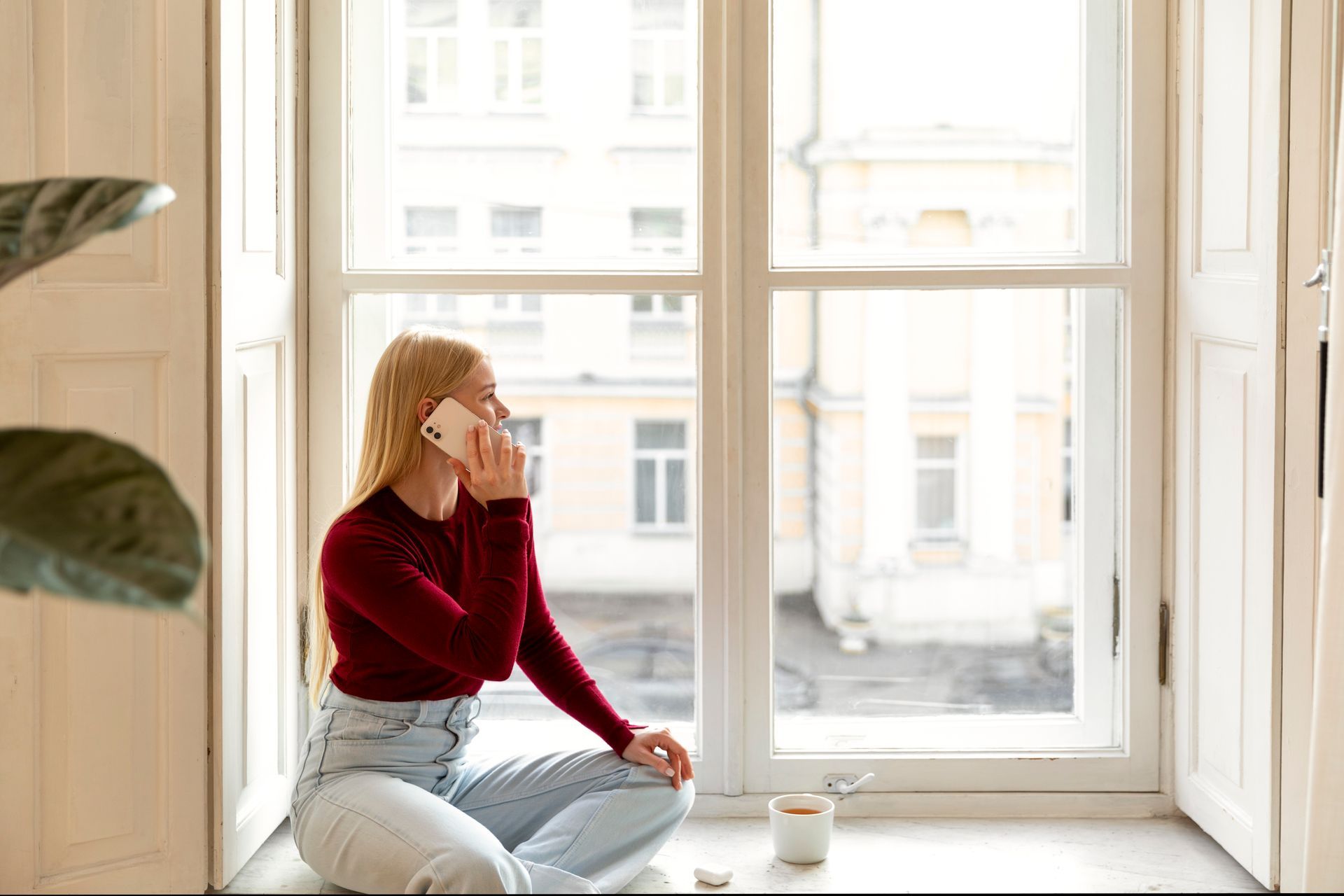Double pane windows provide superior insulation through two glass layers with air space, while Low-E glass adds specialized coatings that reflect heat. The best energy efficiency comes from combining both technologies - double pane construction with Low-E coatings can reduce energy costs by 30-50% compared to single pane windows.
According to ENERGY STAR, windows with both double pane construction and Low-E coatings achieve U-factors as low as 0.20-0.30, significantly outperforming either technology alone and qualifying for maximum federal tax credits and utility rebates in most climate zones.
Understanding the differences between double pane construction and Low-E glass technology helps homeowners make informed decisions about window investments that maximize energy savings and comfort. While these technologies serve different functions, combining them creates the most effective window systems for modern homes seeking optimal thermal performance and long-term value.
Understanding Double Pane Window Technology
Construction and Insulation Benefits
Double pane windows feature two layers of glass separated by an insulating air space, typically 1/2 to 3/4 inches wide, that dramatically reduces heat transfer compared to single pane alternatives. This air gap acts as a thermal barrier, preventing interior heat from escaping during winter and blocking exterior heat during summer months.
The insulating air space can be filled with inert gases like argon or krypton that provide superior thermal performance compared to regular air. These gas fills are denser than air and reduce convection currents within the space, further enhancing the window's insulating properties and energy efficiency performance.
Performance Characteristics and Limitations
Double pane windows without additional coatings provide significant energy improvements over single pane units but have limitations in controlling radiant heat transfer. While the air space blocks conductive heat transfer effectively, radiant energy can still pass through clear glass, reducing overall thermal efficiency.
Standard double pane windows achieve U-factors of 0.40-0.50, representing substantial improvement over single pane windows (U-factor 0.90-1.00) but falling short of the highest efficiency standards possible with modern window technology. This performance level works well for moderate climates but may not optimize energy savings in extreme weather conditions.

Gas Fills and Enhanced Insulation
Argon and Krypton Performance Benefits
Gas fills between double pane glass layers significantly enhance thermal performance by replacing air with denser, less conductive gases that reduce convection currents and heat transfer. Argon gas, the most common fill, provides 30% better insulation than air-filled spaces, while krypton offers even superior performance in thinner air spaces.
These inert gases remain stable over time and do not react with window materials or affect visibility, making them ideal for long-term thermal performance enhancement. Quality gas-filled windows maintain their enhanced insulation properties throughout their service life when properly sealed and manufactured.
Gas Fill Integration with Window Technologies
Gas fills work synergistically with both double pane construction and Low-E coatings to maximize overall window performance, with the combination achieving U-factors as low as 0.20-0.25. The gas fill enhances the thermal barrier provided by the air space while Low-E coatings control radiant heat transfer for comprehensive energy efficiency.
The incremental cost of gas fills typically ranges from $10-25 per window, making them cost-effective upgrades that improve both comfort and energy savings. This small investment often pays for itself within 2-3 years through enhanced thermal performance and reduced energy costs.
Low-E Glass Technology and Benefits
Coating Technology and Heat Reflection
Low-E (low-emissivity) glass features microscopic metallic coatings that reflect infrared radiation while allowing visible light to pass through, controlling radiant heat transfer that standard glass cannot address. These virtually invisible coatings can be applied during manufacturing (hard coat) or added after glass production (soft coat).
Different Low-E formulations target specific performance goals: some emphasize winter heat retention by reflecting interior heat back inside, while others focus on summer cooling by blocking solar heat gain. Advanced selective coatings can optimize both heating and cooling season performance simultaneously.
Visible Light and Solar Control
Low-E coatings maintain excellent visible light transmission (70-80%) while providing precise control over solar heat gain, allowing homeowners to maximize natural light without unwanted heat buildup. This balance between light and thermal control represents a significant advantage over tinted glass alternatives.
Specialized Low-E formulations can reduce ultraviolet transmission by up to 75%, protecting interior furnishings from fading while maintaining clear, undistorted views. This UV protection extends the life of carpets, furniture, and artwork without the visual impact of heavily tinted windows.
Energy Efficiency Performance Comparison
Thermal Performance Ratings
Double pane windows without Low-E coatings typically achieve U-factors of 0.40-0.50, while adding Low-E coatings can improve performance to 0.25-0.35. The combination provides dramatically better insulation than either technology alone, with the air space handling conductive heat transfer and coatings managing radiant energy.
Solar Heat Gain Coefficient (SHGC) differences are even more pronounced: standard double pane windows may have SHGC values of 0.60-0.70, while Low-E coated versions can achieve 0.25-0.40 depending on coating type. This control over solar heat gain significantly impacts cooling costs in warm climates.
Real-World Energy Savings
Homeowners upgrading from single pane to standard double pane windows typically see 20-30% reduction in heating and cooling costs, while adding Low-E coatings can increase total savings to 30-50%. The exact savings depend on climate, home size, existing windows, and usage patterns.
In heating-dominated climates, Low-E coatings that emphasize heat retention provide the greatest benefit, while cooling-dominated regions benefit more from solar control formulations. Moderate climates often achieve optimal results with balanced Low-E coatings that address both seasonal needs effectively.
Cost-Benefit Analysis
Initial Investment Differences
Standard double pane windows typically cost 15-25% more than single pane alternatives, while adding Low-E coatings increases costs by an additional 10-15% over standard double pane. The premium for Low-E technology has decreased significantly as manufacturing efficiency has improved and demand has increased.
The incremental cost of Low-E coatings often pays for itself through energy savings within 3-5 years, making it a cost-effective upgrade for most applications. Federal tax credits and utility rebates can offset 10-30% of the additional cost, improving the return on investment timeline.
Long-Term Value Considerations
Energy savings from Low-E double pane windows compound over time, with cumulative savings often exceeding the initial investment premium within 5-8 years. The enhanced comfort and UV protection provide additional value that extends beyond direct energy cost reductions.
Property value increases from energy-efficient windows typically range from 70-85% of installation costs, with Low-E double pane windows commanding premium pricing in real estate markets. The combination of energy savings and resale value often results in positive return on investment regardless of how long homeowners remain in their homes.
Climate-Specific Performance Considerations
Cold Climate Applications
Cold climates benefit most from Low-E coatings designed for heat retention, typically featuring higher solar heat gain coefficients that capture beneficial winter sunlight while reflecting interior heat back inside. The combination with double pane construction provides exceptional winter comfort and heating cost reduction.
Extreme cold regions may justify triple pane construction with Low-E coatings for maximum thermal performance, though the additional cost requires careful analysis of energy savings potential. Double pane with quality Low-E coatings often provides the best cost-benefit balance for most cold climate applications.
Hot Climate Considerations
Hot climates prioritize solar heat gain control, making Low-E coatings with low SHGC values essential for cooling cost control. The double pane construction provides year-round insulation benefits while Low-E coatings prevent unwanted solar heat gain during cooling seasons.
Reflective Low-E coatings designed for hot climates can reduce cooling costs by 25-40% compared to standard double pane windows, making them essential investments in regions with significant air conditioning usage. The UV protection benefits are particularly valuable in high-sun environments.
When selecting window glass technologies, understanding how different window styles maximize the benefits of double pane and Low-E glass combinations is important for optimal performance. For comprehensive information about how window style choices affect energy efficiency and home value, explore our detailed guide: 🔗Double Hung Window Installation Benefits: Energy Savings & Home Value

People Also Ask About Double Pane vs Low E Glass
1. Can you have both double pane and Low-E glass in the same window?
Yes, and this combination provides the best energy efficiency performance available in residential windows. Double pane construction handles conductive heat transfer through the insulating air space, while Low-E coatings manage radiant heat transfer that glass alone cannot control.
Most high-performance windows feature both technologies as standard equipment, with the Low-E coating applied to one of the interior glass surfaces within the double pane assembly. This combination can achieve U-factors as low as 0.20-0.30 and precisely control solar heat gain for optimal year-round performance.
The incremental cost of adding Low-E coatings to double pane windows is minimal compared to the performance benefits, making this combination the most cost-effective choice for energy-conscious homeowners in any climate zone.
2. Which technology saves more money on energy bills?
Double pane construction provides the foundation for energy savings by reducing conductive heat transfer, typically saving 20-30% on energy costs compared to single pane windows. Adding Low-E coatings can increase total savings to 30-50% by controlling radiant heat transfer and solar heat gain.
The specific savings depend on climate conditions and seasonal energy usage patterns. Cold climates see greater benefits from the insulation provided by double pane construction, while hot climates benefit more from Low-E coatings that control solar heat gain and reduce cooling costs.
For maximum energy savings, the combination of both technologies provides synergistic benefits that exceed either technology alone. The additional cost of Low-E coatings typically pays for itself through increased energy savings within 3-5 years.
3. Do Low-E coatings affect the appearance of windows?
Modern Low-E coatings are virtually invisible and do not significantly affect the appearance of windows from either interior or exterior views. High-quality coatings maintain 70-80% visible light transmission, providing clear, undistorted views that are indistinguishable from uncoated glass.
Some Low-E coatings may produce very subtle color variations under certain lighting conditions, but these effects are minimal and generally unnoticeable during normal use. The coatings are designed to control invisible infrared radiation while preserving natural light quality.
Exterior reflectance varies by coating type, with some formulations creating slight reflective appearance similar to high-quality sunglasses. These effects are typically subtle and often preferred for their aesthetic appeal while providing superior energy performance.
4. How long do Low-E coatings last compared to double pane seals?
Quality Low-E coatings are designed to last the entire life of the window, typically 20-30 years, when properly manufactured and installed. The coatings are protected within the sealed double pane assembly and are not exposed to weather or cleaning chemicals that could cause degradation.
Double pane seals face greater durability challenges due to temperature cycling and structural stresses, with quality seals lasting 15-25 years before potential failure. Seal failure results in fogging between panes but does not affect Low-E coating performance until the unit is replaced.
Premium manufacturers often provide 15-20 year warranties on both seal integrity and coating performance, demonstrating confidence in the long-term durability of both technologies when properly manufactured and installed.
5. Are there different types of Low-E coatings for different climates?
Yes, Low-E coatings are formulated for specific climate conditions and performance priorities. Northern climate coatings emphasize heat retention with higher solar heat gain coefficients that capture beneficial winter sunlight while reflecting interior heat back inside.
Southern climate formulations prioritize solar control with lower solar heat gain coefficients that block unwanted summer heat while maintaining high visible light transmission. These coatings can reduce cooling costs significantly in hot, sunny climates.
Moderate climate coatings balance heating and cooling season performance, providing good heat retention during winter while controlling solar heat gain during summer. Many manufacturers offer climate-specific recommendations based on regional energy codes and performance requirements.
Our Take
At Five Seasons Windows & Doors, we've installed thousands of windows with various glass technologies throughout Colorado and consistently recommend the combination of double pane construction with Low-E coatings for optimal performance and value. Our experience shows that this combination provides the best balance of energy efficiency, comfort, and cost-effectiveness for most residential applications.
We often encounter homeowners who assume they must choose between double pane and Low-E technologies, but the reality is that these technologies work synergistically to address different aspects of thermal performance. Double pane construction provides the structural foundation for insulation, while Low-E coatings fine-tune performance for specific climate conditions.
Our installation experience demonstrates that the incremental cost of adding Low-E coatings to double pane windows pays for itself quickly through enhanced energy savings and improved comfort. The combination also ensures compatibility with current and future energy codes while maximizing available rebates and tax incentives.
Final Takeaway
Double pane construction and Low-E glass technology serve complementary functions in achieving optimal window energy performance, with the best results coming from combining both technologies rather than choosing one over the other. Double pane windows provide foundational insulation through air space separation, while Low-E coatings add precise control over radiant heat transfer and solar heat gain.
The cost-benefit analysis strongly favors the combination approach, with energy savings typically justifying the incremental cost of Low-E coatings within 3-5 years while providing enhanced comfort and UV protection throughout the window's service life. Climate-specific coating formulations ensure optimal performance regardless of regional weather patterns.
Understanding these technologies as complementary rather than competing options helps homeowners make informed decisions that maximize energy efficiency, comfort, and long-term value. Professional installation ensures optimal performance from both technologies while maintaining warranty coverage and qualifying for available energy efficiency incentives.
Get Started Today
Five Seasons Windows & Doors is Colorado’s top-rated local window company with 230+ 5-star reviews. We offer expert advice, no-pressure quotes, and flexible project options — including phased installs. Schedule your consult today.



